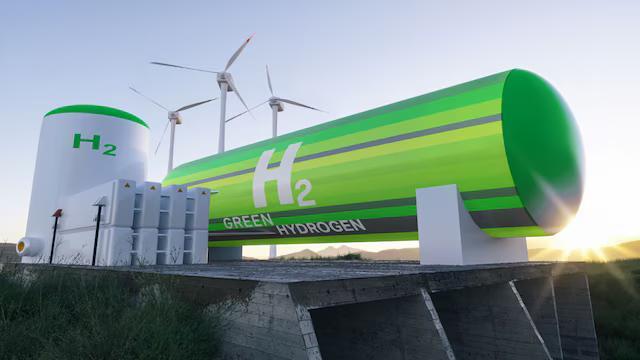
Indian Scientists Develop Green Hydrogen from Sugarcane Waste
In a groundbreaking achievement, scientists at the Indian Institute of Technology (IIT) in Banaras Hindu University (BHU) have developed a revolutionary technology to produce green hydrogen from sugarcane biomass waste. This innovative method uses a newly isolated bacterial strain, Alcaligenes ammonioxydans, which is highly efficient in converting sugarcane bagasse, an abundant agricultural waste, into hydrogen gas. Green hydrogen is considered a potential clean fuel as it burns without releasing climate-warming carbon dioxide (CO2).
The production of green hydrogen has gained significant attention in recent years due to its potential to decarbonize various industries, such as transportation, power generation, and industrial processes. Traditional methods of producing hydrogen involve fossil fuels, which contribute to greenhouse gas emissions. However, green hydrogen production offers a cleaner and more sustainable alternative.
The IIT-BHU team, led by Dr. Rakesh Kumar, a professor at the Department of Biotechnology, isolated the bacterial strain Alcaligenes ammonioxydans from soil samples collected from the sugarcane-growing regions of Uttar Pradesh. They discovered that this bacterium has the unique ability to convert sugarcane bagasse, a waste product generated during sugarcane processing, into hydrogen gas.
The bacteria use a process called anaerobic fermentation, where they break down the sugarcane biomass in the absence of oxygen, producing hydrogen gas as a byproduct. This process is highly efficient, with the bacteria able to convert up to 70% of the sugarcane bagasse into hydrogen gas.
The IIT-BHU team’s breakthrough technology has several advantages over traditional methods of green hydrogen production. First, it utilizes an abundant and renewable resource, sugarcane bagasse, which is generated in large quantities during sugar production. Second, the process is highly efficient, reducing the energy required to produce hydrogen. Finally, the technology is scalable, making it viable for commercial implementation.
The implications of this technology are far-reaching. Green hydrogen can be used as a clean fuel for transportation, power generation, and industrial processes, reducing the reliance on fossil fuels and mitigating climate change. The technology can also create new economic opportunities for sugarcane farmers and industries, who can generate additional income by selling their waste biomass.
The IIT-BHU team is now working to scale up the technology and develop a commercial-scale production facility. They are also exploring ways to integrate the technology with existing sugarcane processing facilities, making it easier to implement and reducing the cost of production.
The development of green hydrogen production technology from sugarcane biomass waste is a significant achievement for Indian scientists. It demonstrates the country’s growing capabilities in biotechnology and its commitment to developing sustainable solutions for climate change.
As the world continues to grapple with the challenges of climate change, innovative technologies like the one developed by IIT-BHU are essential for reducing greenhouse gas emissions and transitioning to a low-carbon economy. The development of green hydrogen production technology from sugarcane biomass waste is a promising step forward in this direction.






